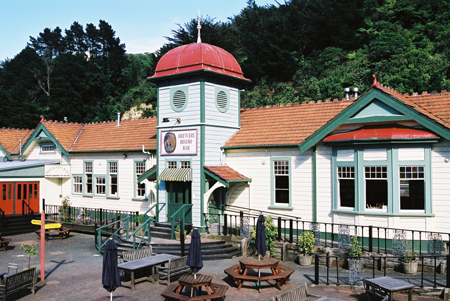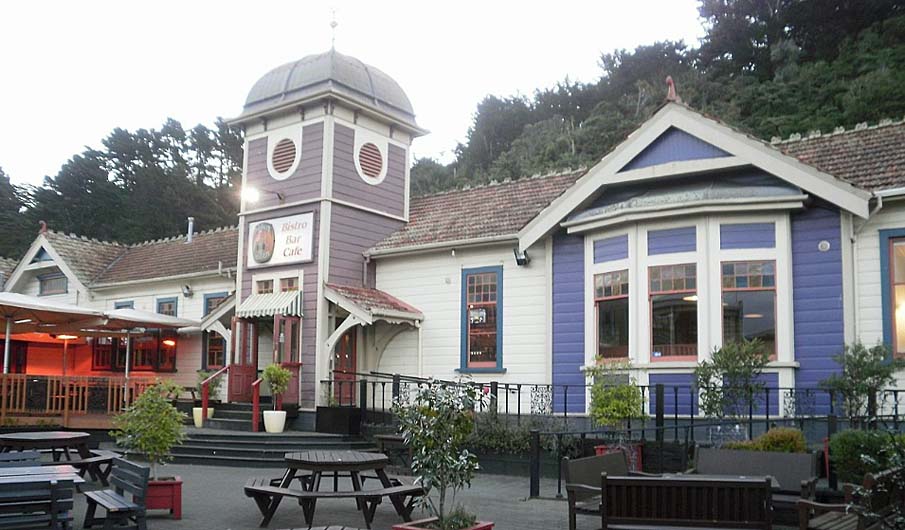This 1905 railway station is the second to stand on this site and serviced what was once the main railway line connecting Wellington with the Hutt Valley and the Wairarapa. The station was built during a period of rapid expansion in railway transport in New Zealand and has great architectural significance as one of the very few ornate examples of the work of George Alexander Troup (1863-1941). At the beginning of the 20th century the government undertook to spend £500,000 per annum on developing the railway network. These plans included the construction of new railway lines, stations, and offices. In 1905, as part of this expansion, new stations were built at Petone and Lower Hutt, and the line between the two duplicated. The new stations were designed by Troup, who had been appointed Chief Draughtsman for New Zealand Railways in 1894. While Troup is perhaps best known for his design of the Dunedin Railway Station (1907), he also prepared standardised plans for provincial railway stations ranging in size from simple shelter sheds to elaborate buildings, which often incorporated elements of contemporary domestic architectural fashions. The railway station at Lower Hutt is an example of the latter. It is a single-storey Queen Anne style building, with tower, ornate timber detailing and decoration, and a crested, Marseille-tiled roof. The platform canopy is supported by curved, perforated iron brackets. The square tower is capped with shaped dome and ornate finial above. The tower was designed to draw attention to the main entrance porch on what was originally the street frontage. At the rear there is a shallow bay window with hoods over the doors. After the First World War, Troup was appointed chief architect of New Zealand Railways. On his retirement in 1925 he entered local body politics and was Mayor of Wellington (1927-1931). The use of the Lower Hutt station declined in 1927 when a new commuter line to Waterloo, on the eastern side of the Hutt Valley, was completed. The decline continued in the 1950s when the Waterloo line was extended to serve state housing developments, and Lower Hutt was reduced to a branch line. In 1991-1992 the station building was converted into a bar, restaurant and brewery complex with considerable modification to its fabric. Commuter trains still pick up passengers at the platform, the stop having been renamed Western Hutt. The Lower Hutt railway station is significant as it is one of the few remaining examples of an elaborate Troup station dating to the turn of the 20th century. It is also significant as it reflects the expansion of railway transport in New Zealand, the changing population patterns in the Hutt Valley, and the importance of the Wellington to Wairarapa line around the turn of the 20th century.




Location
List Entry Information
Overview
Detailed List Entry
Status
Listed
List Entry Status
Historic Place Category 1
Access
Private/No Public Access
List Number
1327
Date Entered
9th September 1986
Date of Effect
9th September 1986
City/District Council
Hutt City
Region
Wellington Region
Stay up to date with Heritage this month
